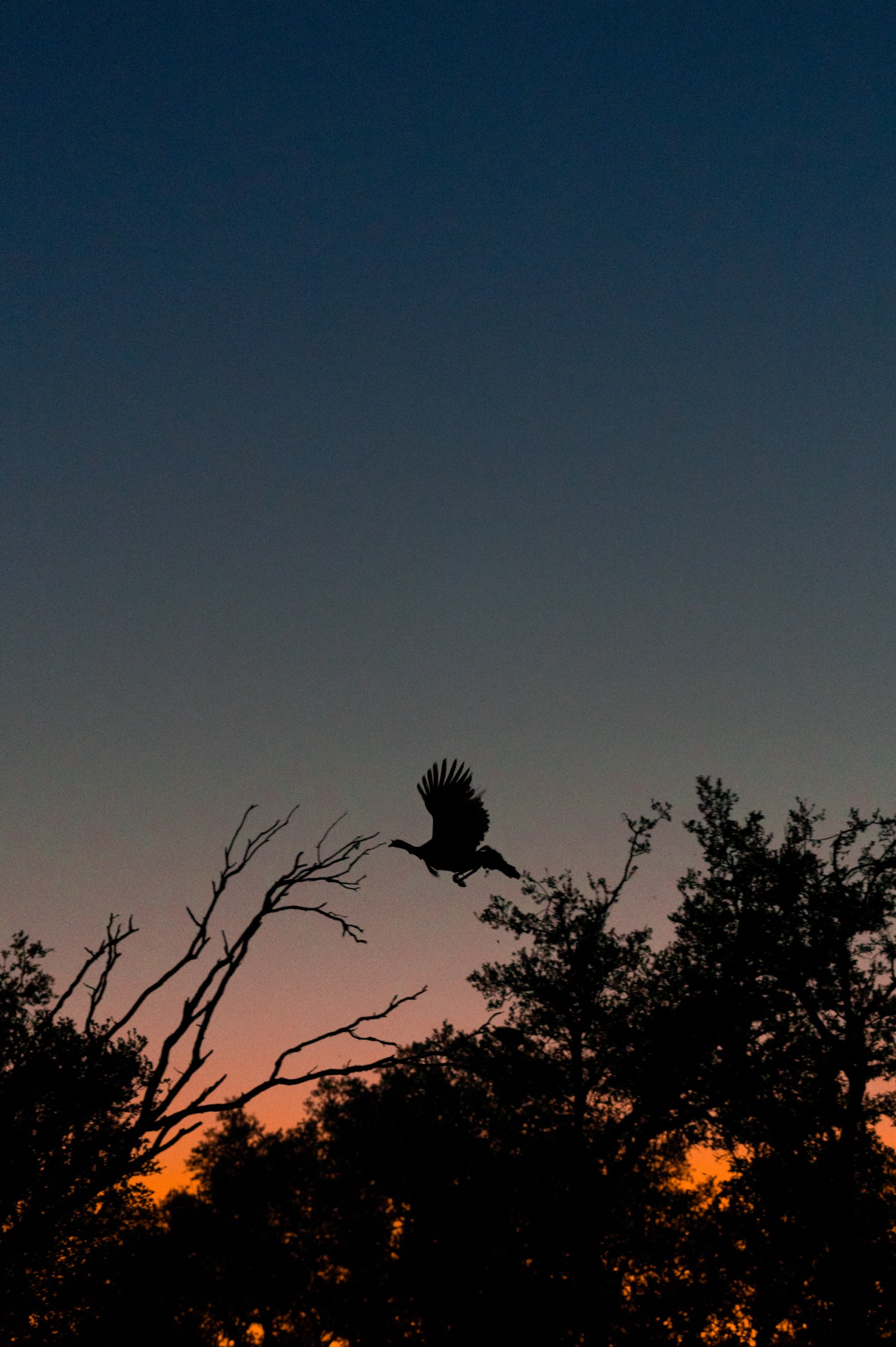Written by Heath Wood

Photography by Austin Stapleton
Spring turkey hunting is a pursuit deeply intertwined with the rhythm of nature. It's a dance between hunter and prey, where success hinges on skill, patience, and understanding of the turkey's behavior. Nowhere is this more evident than in the early morning, as the sun begins ascent, and the forest awakens with anticipation.
The approach of patience in spring turkey hunting, particularly during the critical moments surrounding sunrise is when I have often struggled. Like many other turkey hunting enthusiasts, I love to hear the gobbling of a tom when answering a call. Yet, this has often spoiled my chances of calling a tom into close range before he has even flown off the roost. To help tame my eagerness to elicit a response from a tom turkey, I've developed a strategy of keeping my mouth call tucked away in a separate, hard-to-reach pocket during the early morning hours. This deliberate placement restrains my urge to call too frequently, allowing me to exercise patience and avoid rushing the fly-down.
If the caller is patient and lets nature take its course, one can often determine where turkeys are going, how many hens they are competing with, and how eager a gobbler wants to come to their call. When a hunter is too eager from the beginning, over-calling can detour the toms route or allow more time for hens to sneak in and steal the show.
The Significance of Early Morning Activity
The pre-dawn hours hold a special significance in spring turkey hunting. It's a time when the woods come alive with the sounds of nature stirring from its slumber. This period represents a prime opportunity for the turkey hunter to intercept gobblers as they begin their daily routines. Turkeys are most active during the early morning, making it an optimal time to call and engage with them. The stillness of dawn provides a canvas upon which the hunter can paint their strategy, but success often hinges on one crucial factor: patience.
In my twenty-five-plus years of turkey hunting, I have learned to begin with a few soft tree yelps from my diaphragm call. The low-volume cadence lets the roosted tom know a hen is nearby. After the tree yelps, it is time to stay quiet and be patient. Patience is not merely the absence of action; it's a deliberate choice to let nature take its course. When it comes to spring turkey hunting, this means resisting the urge to rush the fly down. Instead, give the gobbler time to descend at his own pace. Set up strategically where you have a clear line of sight to the roost tree but remain concealed and motionless. Let your calls mimic the natural sounds of a hen waking up to greet the day, enticing the gobbler to respond. Remember, patience is not passive; it's an active state of readiness, which means the hunter is prepared to seize the moment when it presents itself.
Understanding Gobbler Behavior
To effectively hunt spring gobblers, one must first understand their behavior during the pre-dawn hours. Gobblers typically roost in trees overnight, using them as a haven from predators. As daylight breaks, they'll fly down from their roosts for food, water, and companionship. However, they're cautious creatures, wary of potential dangers lurking in the shadows. Understanding this instinct is vital to a successful hunt. Rushing the fly down doesn’t always mean over-calling. It can occur when walking in before daylight or when trying to close the distance from a roosted tom. If you get too close to the roost or make sudden movements, it can easily spook a gobbler, resulting in him going quiet on the roost; it could also send him fleeing into the safety of the woods, leaving you no chance.
Adapting Tactics
No two turkey hunts are alike, and flexibility is critical to adapting to changing circumstances. Please pay close attention to the gobbler's behavior as he flies down from his roost. Is he gobbling eagerly, indicating receptiveness to your calls? Or is he silent, signaling caution or disinterest? Adjust your tactics accordingly. If the gobbler is responsive, continue calling softly to maintain his interest. If hesitant or silent, ease off on the calls and rely on subtle movements to draw him closer. It is imperative to remember that in Mother Nature’s world, the hen is to go to the gobbler, and we, as hunters, are trying to reverse that when calling. Too much calling can make the tom think he can stay put and wait for you to come to visit him. Instead, play hard-to-get and make him search for you. Also, remember that patience and adaptability go hand in hand, allowing you to capitalize on opportunities as they arise.
In pursuing spring gobblers, patience is not merely a virtue; it is strategic. Hunters can significantly increase their chances of success by understanding the importance of early morning activity, the behavior of gobblers during the pre-dawn hours, and the art of exercising patience and adaptability. So, the next time you find yourself perched in the predawn darkness, awaiting the arrival of a gobbler, remember, don't rush the fly down. Instead, embrace the moment, let nature unfold at its own pace, and savor the thrill of the hunt.































